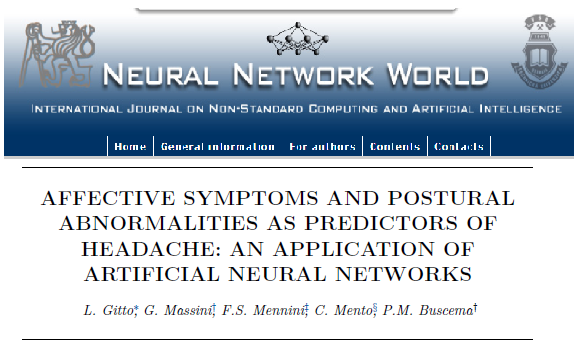
|
 |
Abstract: Chronic headache is a major liability in the individuals’ quality of life. Identifying in advance the main features common to patients with headache may allow planning a preventive strategy of intervention. An artificial neural network model (Auto Contractive Maps { AutoCM), aimed at analyzing the correlations between patients’ characteristics, affective symptoms and posture indicators has been developed in this paper. Patients suffering from chronic headache were observed at a neurological centre in Sicily (Italy). Headache and affective states were measured using the Profile of Mood States (POMS), the Beck Depression Inventory (BDI), the Toronto Alexithymia Scale (TAS-20) and the Repression Scale. Postural evaluations were carried through a stabilometric platform. The method of analysis selected allowed to reconstruct some records that were missing, through a Recirculation AutoAssociative Neural Network, and to obtain sound results. The results showed how some items from TAS-20, Repression and POMS were closely linked. The postural abnormalities were correlated primarily with repression features. The highest scores of the POMS were correlated with the items of the BDI. The results obtained lead to interesting remarks about the common traits to patients with headache. The main conclusion lies in the potentialities offered by the new methodology applied, that may contribute, overall, to a better understanding of the complexity of chronic diseases, where many factors concur to define patients’ health conditions.
